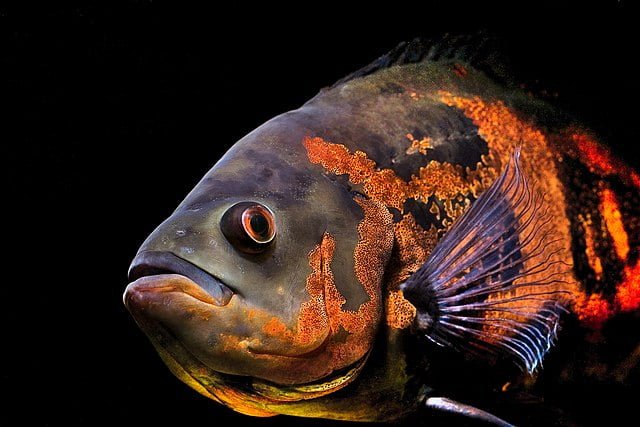
Shrimp are a vital part of the global aquaculture industry, but their health and growth can be significantly affected by stress. Thus, nutrition plays a significant role in ensuring proper growth and disease resistance.
A crucial element in shrimp nutrition is phosphorus (P), essential for energy production and various bodily functions. But did you know that the type of phosphorus in shrimp diets can significantly affect their growth and stress response?
Researchers from the National Technological Institute of Mexico, the Center for Biological Research of the Northwest S. C., and the University of Brest evaluated changes in the energy metabolism of Pacific white shrimp (Litopenaeus vannamei) diets supplemented with different phosphorus sources.
The Importance of Phosphorus for Shrimp
Phosphorus is a crucial element for shrimp and plays a key role in energy production and other essential functions. This study explored whether the specific chemical form of P in the diet could influence the shrimp’s ability to handle stress.
Phosphorus is an essential mineral for many biological processes in shrimp, including:
- Energy production: Phosphorus is a key component of adenosine triphosphate (ATP), the “energy currency” of cells.
- Muscle function: Another important molecule containing phosphorus, arginine phosphate (ArgP), is essential for muscle function and movement.
- Growth and development: Phosphorus is also needed to form and maintain healthy tissues and organs.
Dietary Phosphorus and Stress Response
The source of P in shrimp diets is highly important. Fish meal, a traditional source, contains P in a form with low bioavailability, meaning shrimp cannot easily absorb it. Replacing fish meal with plant-based alternatives is more sustainable, but these often contain P in a form called phytate (some researchers have used enzymes to overcome this deficiency), which is even less usable by shrimp.
Studies have shown that the chemical form of P in shrimp diets significantly affects growth and survival. Mono-phosphate salts such as potassium phosphate and sodium phosphate appear to be more easily absorbed than calcium-based sources.
The researchers investigated the impact of four different sources of P in the diet on shrimp stress response:
Stay Always Informed
Join our communities to instantly receive the most important news, reports, and analysis from the aquaculture industry.
- Mono-phosphate sources: KH2PO4 (potassium dihydrogen phosphate) and NaH2PO4 (sodium dihydrogen phosphate)
- Ammonium phosphate: NH4H2PO4 (ammonium dihydrogen phosphate)
- Polyphosphate: Na5P3O10 (sodium tripolyphosphate)
Shrimp were exposed to a handling and hypoxia (low oxygen) challenge to simulate stress conditions commonly found in aquaculture environments.
Key Findings from the Study
The study revealed some interesting findings:
- Improved growth with tripolyphosphate: Shrimp fed the tripolyphosphate (Na5P3O10) diet showed significantly higher final weight (8.5%) compared to those fed mono-phosphate diets. Weight gain and overall growth also tended to be better with tripolyphosphate, though not statistically significant.
- Stress response and biochemical changes: Stress exposure resulted in increased lactate and glucose levels in the shrimp’s hemolymph (blood equivalent), indicating stress-induced energy mobilization. Stress also reduced adenylate energy charge (AEC) and ArgP levels in muscle tissue, suggesting depletion of available energy reserves.
- Dietary P source and stress response: Interestingly, different P sources in the diet did not significantly affect the overall stress response, with one exception. Shrimp fed a NaH2PO4 diet showed higher levels of carbohydrates in the hepatopancreas and increased expression of arginine kinase (AK) RNA in muscle. This suggests a potential improvement in energy status with this specific P source in the diet.
Conclusion
This study highlights the potential role of dietary P source in optimizing shrimp health and stress resistance. While more research is needed to fully understand the mechanisms at play, the findings suggest that tripolyphosphate may be beneficial in promoting growth, while specific mono-phosphates like NaH2PO4 could offer advantages for maintaining energy reserves during stressful conditions. By optimizing the content and form of P in the diet, shrimp growers can potentially improve the overall health and performance of their shrimp, leading to a more sustainable and productive aquaculture industry.
Contact
Ilie S. Racotta
Programa de Acuicultura, Centro de Investigaciones Biológicas del Noroeste S. C.
Calle Instituto Politécnico Nacional 195, La Paz, Baja California Sur, Mexico
Email: iracotta@cibnor.mx
Francisco Magallón-Barajas
Programa de Acuicultura, Centro de Investigaciones Biológicas del Noroeste S. C.
Calle Instituto Politécnico Nacional 195, La Paz, Baja California Sur, Mexico
Email: fmagallon04@gmail.com
Reference
Martínez-Antonio, E. M., Salgado-García, R. L., Peña-Rodríguez, A., Ruvalcaba-Márquez, J. C., Kraffe, E., Racotta, I. S., & Magallón-Barajas, F. (2024). Implications of dietary phosphorus sources on zootechnical performance and stress response of the pacific white shrimp Litopenaeus vannamei. Animal Feed Science and Technology, 309, 115889. https://doi.org/10.1016/j.anifeedsci.2024.115889
Editor at the digital magazine AquaHoy. He holds a degree in Aquaculture Biology from the National University of Santa (UNS) and a Master’s degree in Science and Innovation Management from the Polytechnic University of Valencia, with postgraduate diplomas in Business Innovation and Innovation Management. He possesses extensive experience in the aquaculture and fisheries sector, having led the Fisheries Innovation Unit of the National Program for Innovation in Fisheries and Aquaculture (PNIPA). He has served as a senior consultant in technology watch, an innovation project formulator and advisor, and a lecturer at UNS. He is a member of the Peruvian College of Biologists and was recognized by the World Aquaculture Society (WAS) in 2016 for his contribution to aquaculture.



